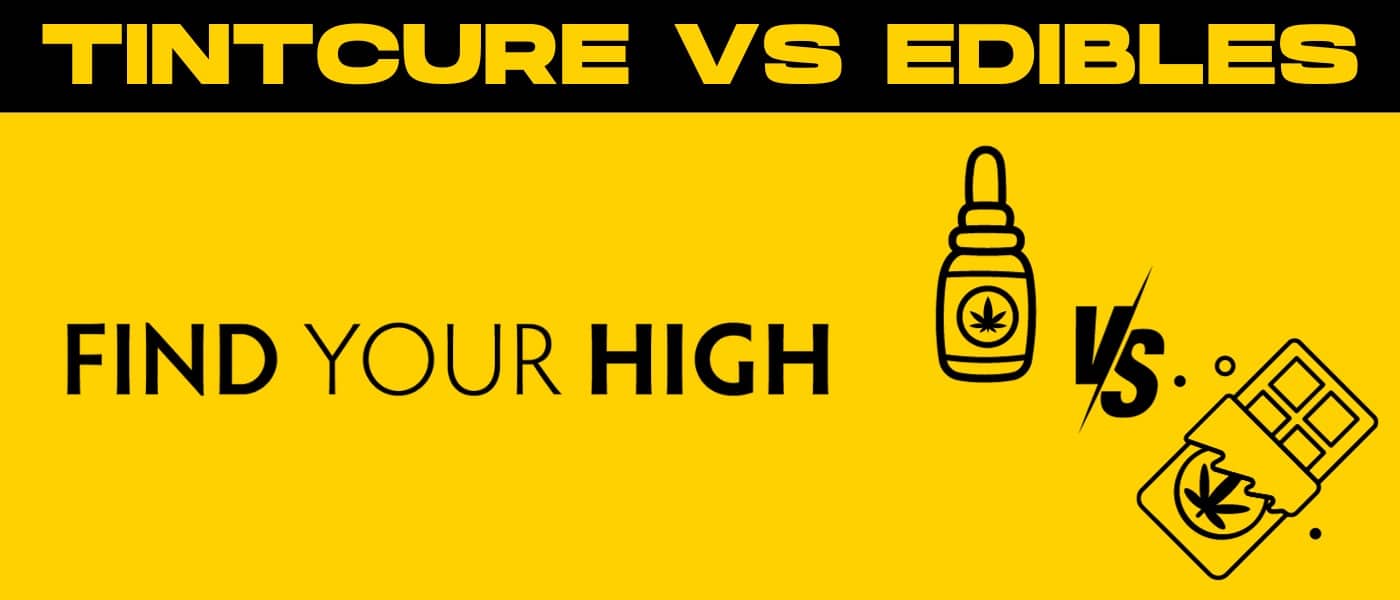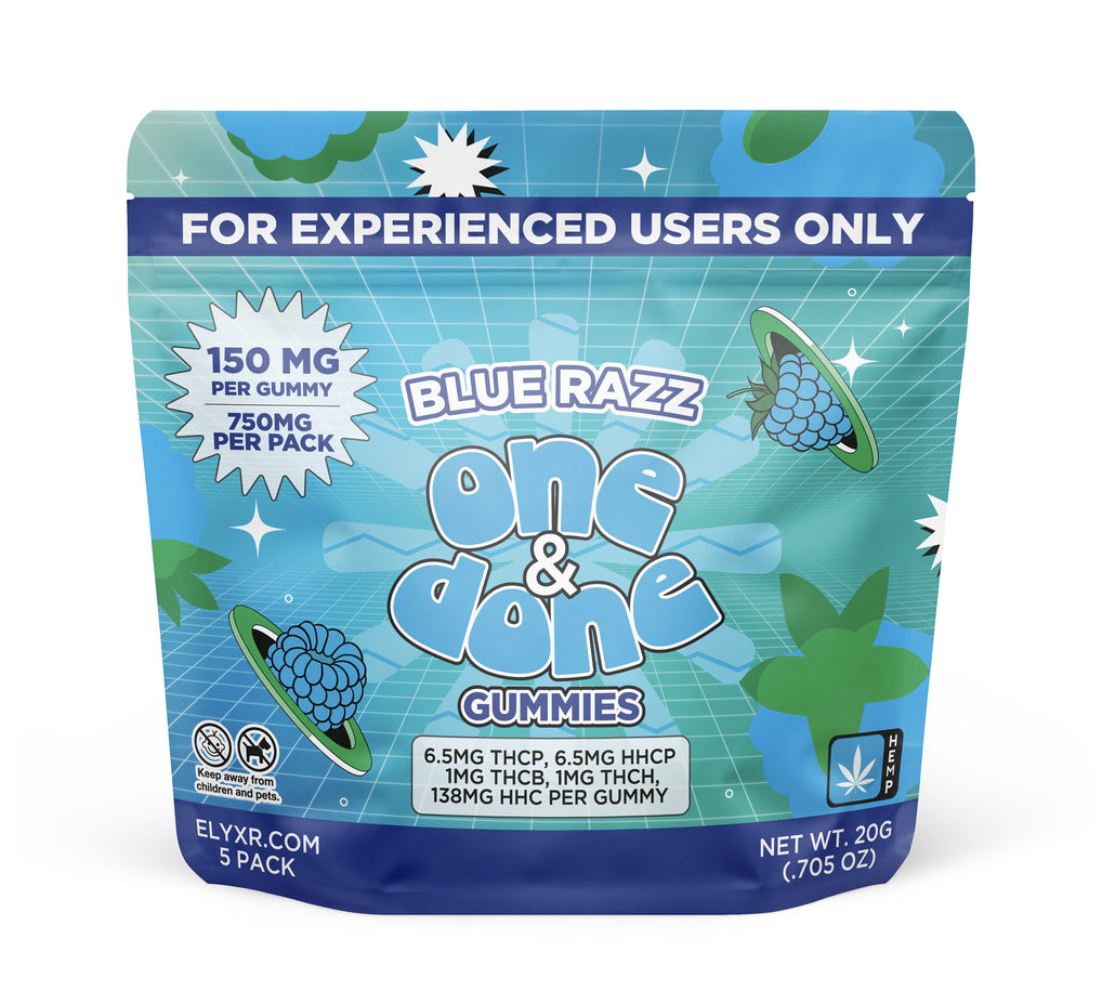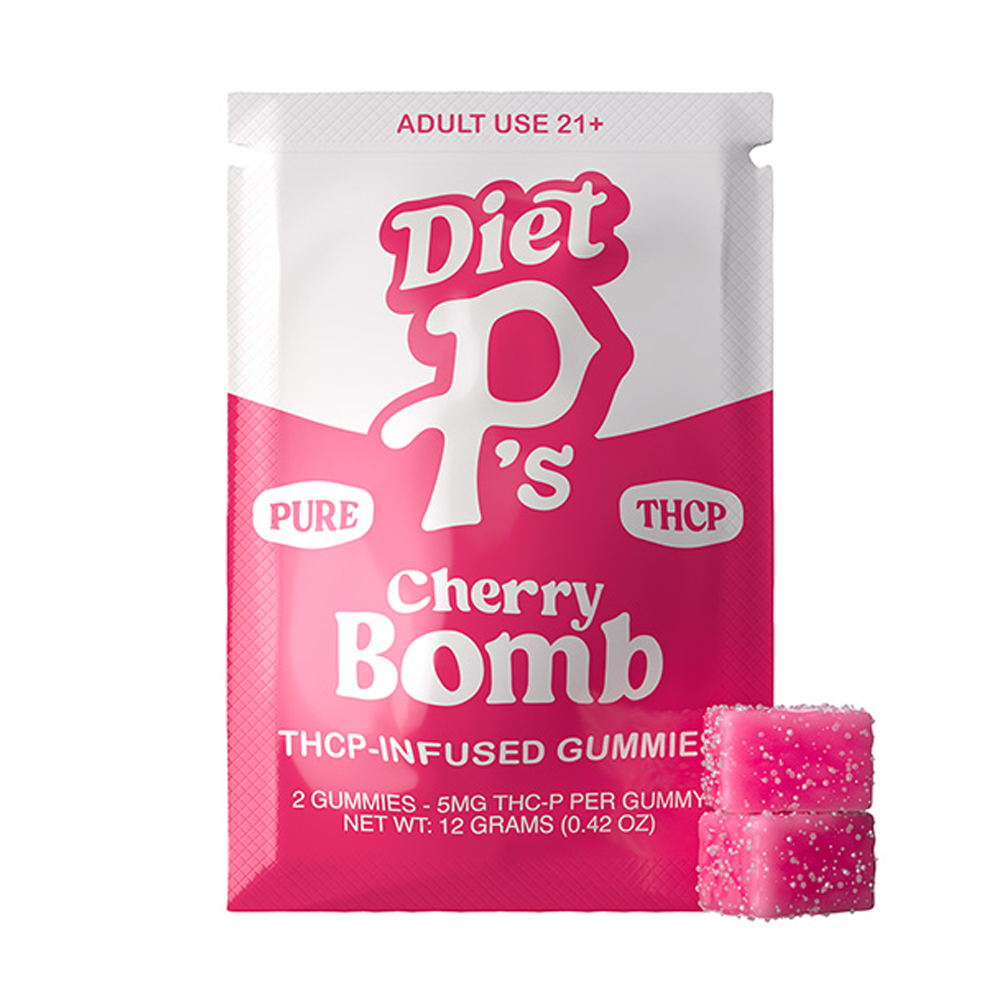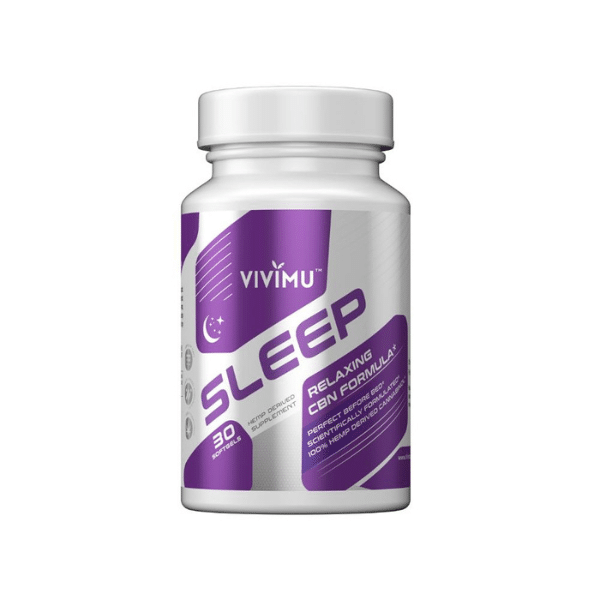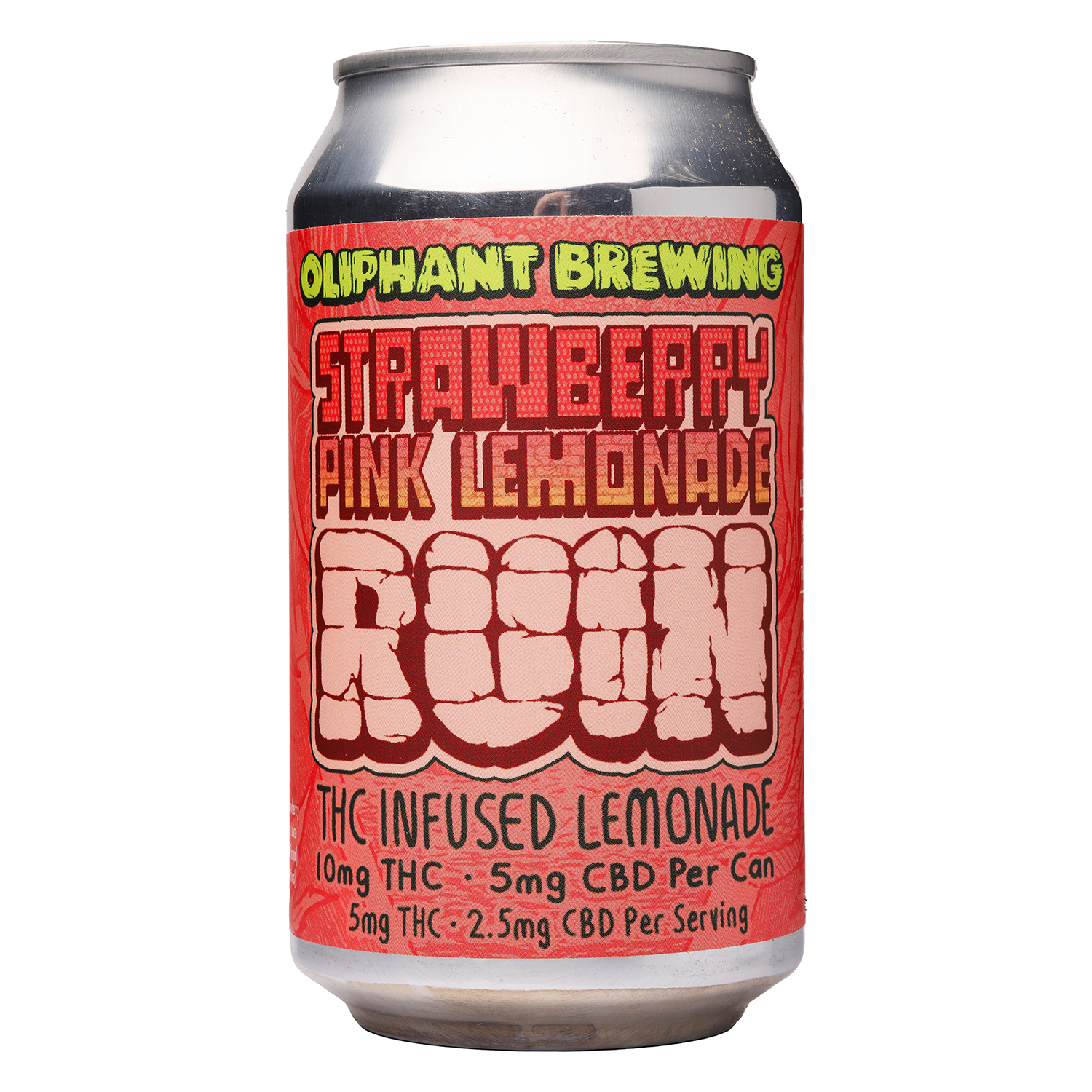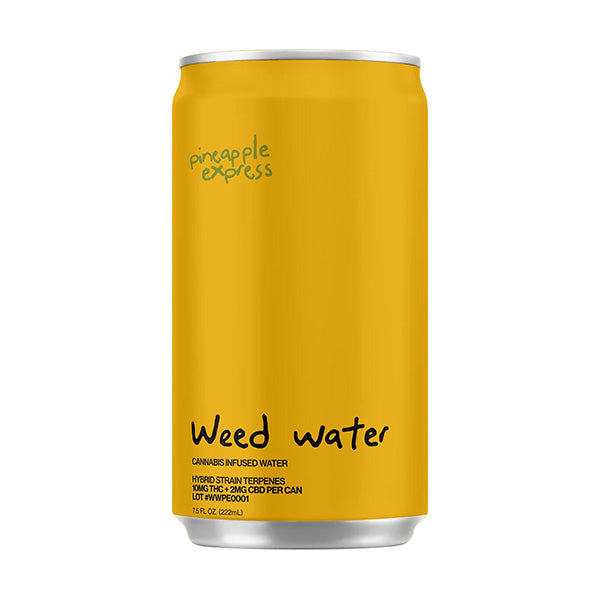When it comes to consuming cannabis, the classics—like flower and pre-rolls—still hold their place. But for those who prefer a smokeless, more controlled experience, tinctures vs edibles have become two of the most popular options. Whether you’re looking for fast-acting relief, a discreet way to microdose, or a long-lasting high that carries you through the day (or night), choosing between tinctures and edibles isn’t always straightforward. Each comes with its own unique set of benefits, drawbacks, and use cases. So how do you know which one is right for you?
In this guide, we’re diving deep into the world of tinctures vs edibles, comparing everything from onset time and duration to flavor, bioavailability, and beyond. By the end, you’ll have a clear understanding of what sets these two methods apart—and how to choose the best fit for your lifestyle and needs.
What Are Tinctures?
Tinctures are liquid cannabis extracts, typically made by soaking cannabis flower in alcohol or oil to pull out the plant’s active compounds like THC, CBD, and other cannabinoids. This method creates a potent solution that can be dosed using a small dropper bottle. Most users administer tinctures sublingually—placing a few drops under the tongue—allowing for quick absorption through the mucous membranes. Alternatively, cannabis tinctures can be added to beverages or foods for a slower onset that resembles the experience of an edible.
One of the biggest advantages of tinctures lies in their flexibility and precision. Because they’re often clearly marked in milligrams per dropper, users can easily control their dose and tailor it to their tolerance or needs. Whether you’re trying to manage chronic pain, relieve anxiety, or simply wind down at the end of the day, tinctures offer a straightforward and smoke-free method of consumption.

What Are Edibles?
Edibles are cannabis-infused food or drink products consumed orally that deliver cannabinoids through digestion. They range from THC gummies and cookies to infused sodas, chocolates, and more recently, even savory snacks. Edibles are often designed for recreational or medical users seeking a longer-lasting experience, and they’re known for providing a full-body effect rather than a rapid cerebral high.
The process of consuming cannabis edibles involves your digestive system and liver, which convert THC into a metabolite known as 11-hydroxy-THC—a compound that’s notably more potent and longer-lasting than standard Delta-9 THC. As a result, the effects of edibles tend to be stronger, more sustained, and sometimes a bit more unpredictable, especially for those with a low tolerance or limited experience.
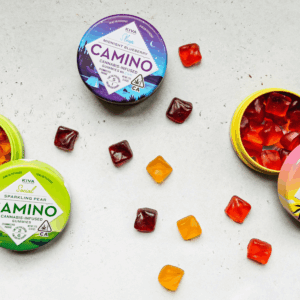
Onset Time: How Fast Do They Kick In?
One of the key differences between tinctures and edibles is how quickly they begin to take effect. With tinctures—especially when used sublingually—the onset time can be as quick as 15 to 45 minutes. That’s because the cannabinoids are absorbed directly into the bloodstream through the tissues under the tongue, bypassing the digestive system entirely.
On the other hand, edibles typically take much longer to kick in—anywhere from 30 to 90 minutes or even more, depending on your metabolism, whether you’ve eaten recently, and how much food is in your stomach. Since the cannabinoids must be processed by the liver before entering the bloodstream, the delay in onset is one of the most important factors to consider when deciding between these two options.
Understanding the onset timeline can help avoid accidentally overdoing it. Many first-time edible users take an additional dose too soon, only to be hit by a double wave of intensity later. Tinctures can help eliminate that guesswork with their faster, more consistent onset.
Duration of Effects
While tinctures offer a quick start, the duration of their effects tends to be shorter than that of edibles. Most users find that tinctures last somewhere between 4 to 6 hours, depending on dosage and individual tolerance. This makes them great for targeted and immediate relief during the day, especially when you don’t want to be locked in for too long.
Edibles, in contrast, can last 6 to 8 hours or even longer—making them ideal for extended relaxation, deep sleep, or all-day symptom management. Because they deliver a more gradual release of cannabinoids into the body, they tend to produce a smoother but more enduring experience. Just keep in mind that the long duration means you’ll be committed for a while, which isn’t always ideal in every situation.
Potency and Dosing Control
One of the biggest selling points for tinctures is precise dosing. Most tinctures come with a clearly labeled dropper, allowing you to measure out exact amounts down to the milligram. This level of control is incredibly helpful for new users or anyone looking to microdose and dial in their ideal amount with minimal guesswork.
Edibles also come in clearly marked doses—usually in 5mg or 10mg increments—but they can be less forgiving if you want to make small adjustments. Cutting a gummy or splitting a cookie might not yield an even distribution of THC, which can result in inconsistent experiences. Plus, once you’ve eaten it, there’s no going back.
If you’re the type who likes to experiment with minimal doses or slowly build up your tolerance, tinctures offer the kind of customization that edibles just can’t match.
Method of Consumption
Cannabis consumption doesn’t have to involve rolling, lighting, or inhaling anything. That’s where both tinctures and edibles shine—but the way you take them differs.
Tinctures are designed for sublingual use, where the liquid is placed under the tongue and held for about 30–60 seconds before swallowing. You can also add them to beverages or mix them into foods, though this changes the onset and absorption.
Edibles, on the other hand, are meant to be chewed and swallowed. They come in a wide range of forms, including brownies, gummies, mints, chocolates, and drinks. Some users prefer the ritual and sensory experience of eating a cannabis treat, while others might lean toward tinctures for their speed and ease.
It really comes down to personal preference and how you want to integrate cannabis into your lifestyle.
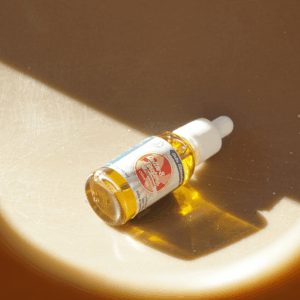
Bioavailability: How Much THC/CBD Is Absorbed?
Bioavailability refers to how much of a substance your body actually absorbs and uses. With cannabis, this is a crucial factor—especially when comparing tinctures vs edibles.
Tinctures tend to have higher bioavailability, especially when used sublingually. That’s because cannabinoids avoid the digestive system and liver, entering the bloodstream more efficiently. Some sources estimate tincture bioavailability at around 20% to 35%, which can make your dose go further.
Edibles, by contrast, have lower bioavailability, typically in the 4% to 12% range. The digestion and liver processing—known as the first-pass effect—degrades a portion of the THC before it ever reaches your bloodstream. However, that same process creates 11-hydroxy-THC, which is more potent and contributes to edibles’ strong, long-lasting high.
So while you may absorb less THC overall with edibles, the effects can still feel more intense due to how the body processes them.
Flavor and Experience
Let’s be real—flavor matters. If you’re going to consume cannabis regularly, you want the experience to be enjoyable.
Tinctures often carry an earthy or bitter taste, especially alcohol-based varieties. Some users get used to it over time, while others opt for flavored tinctures or mix them into drinks to mask the flavor. Oil-based tinctures are typically milder but can still have a distinct herbal note.
Edibles, on the other hand, tend to be delicious by design. From fruit-flavored gummies to gourmet chocolates and infused sodas, there’s something to match nearly every taste preference. For those who want their cannabis to feel like a treat, edibles easily win the flavor category.
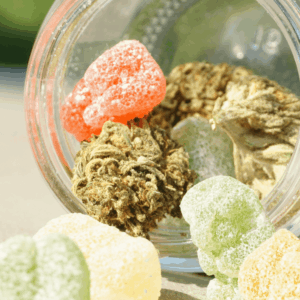
Discretion and Portability
When it comes to discretion, both tinctures and edibles get high marks, but each has its advantages.
Tinctures are compact, often odorless, and can be taken without drawing much attention. A small dropper bottle can easily fit in your pocket or bag, and dosing can be done quickly and quietly. There’s no smell, no smoke, and no mess.
Edibles are equally discreet. A THC gummy or infused mint looks just like regular candy, and they don’t require any special equipment. The only challenge might be resisting the temptation to eat more than you planned.
For travel or public settings, both options are solid—just make sure you’re aware of local laws and regulations, especially if you’re flying or crossing state lines.
Health Considerations
For health-conscious consumers, both tinctures and edibles come with considerations worth noting.
Tinctures, especially those made with MCT oil or alcohol, may cause issues for people with certain sensitivities. Alcohol-based tinctures can be harsh on the stomach or mouth, while oil-based options may not be suitable for those with fat digestion issues.
Edibles often contain sugar, artificial flavors, gluten, or other allergens, which can be a downside for anyone on a strict diet or with food sensitivities. Some edibles are also high in calories, making them less appealing for daily use.
When comparing the two, tinctures generally come out ahead for those seeking a cleaner, low-calorie method of consumption—but it all depends on your specific dietary needs.
Customization and DIY Potential
For the DIY crowd, tinctures offer more flexibility. You can easily infuse your own tinctures at home using alcohol or oil and decarboxylated cannabis flower. Once made, tinctures can be dropped under the tongue, added to coffee or tea, or even drizzled onto meals.
Edibles can also be made at home, but they require a bit more effort, including cooking or baking, and ensuring even dosing throughout your batch. That said, they offer more creative freedom—you can make cookies, gummies, or even savory snacks.
If you like customizing your cannabis experience, cannabis plant tinctures offer a versatile base, while edibles let you get a bit more culinary with your cannabis.
Use Cases: When to Use Each One
Choosing between THC tinctures and marijuana edibles often comes down to what you’re trying to accomplish. Here’s a quick look at the best use cases for each:
Tinctures are ideal for:
- Fast-acting relief from anxiety, nausea, or pain
- Controlled microdosing
- Daytime use or frequent dosing
- People who want to avoid sugar, gluten, or calories
Edibles are ideal for:
- Long-lasting sleep support
- All-day or all-night effects
- A stronger, full-body high
- Recreational users who want a flavorful experience
Thinking about your lifestyle and specific goals can help guide your choice.
Tinctures vs Edibles: A Side-by-Side Comparison
When it comes to choosing between tinctures and edibles, there are some key differences. Tinctures typically have a faster onset time, with effects kicking in within 15–45 minutes, while edibles take longer, usually 30–90+ minutes.
In terms of duration, tinctures last about 4–6 hours, while edibles tend to last longer, around 6–8 hours or more. Tinctures also have higher bioavailability, with 20–35% of the cannabinoids being absorbed, whereas edibles have a lower bioavailability of 4–12%.
Flavor-wise, tinctures have an herbal or neutral taste, while edibles come in a wide variety of flavors, both sweet and savory. Tinctures allow for high dosing precision, while edibles offer moderate control. Both methods are discreet and portable, but tinctures are easier to make and use at home, while edibles require more effort but offer customizable options. Tinctures are ideal for quick relief and daily use, while edibles are better for longer-lasting effects.
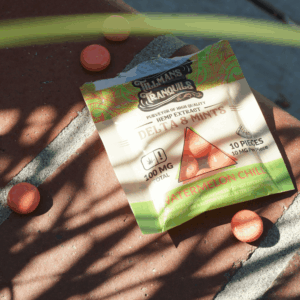
Final Thoughts on Tinctures vs Edibles: Which One Is Right for You?
There’s no clear winner in the tinctures vs edibles debate—just different tools for different jobs. Tinctures offer fast relief, easy dosing, and minimal fuss, making them perfect for those who want to stay functional, controlled, and discreet. Edibles, on the other hand, are all about the long game: powerful, immersive effects that last for hours and come wrapped in a tasty treat.
At the end of the day, it’s all about your personal goals, tolerance, and preferences. Some people even incorporate both into their routine—tinctures during the day and edibles at night, for example. So don’t be afraid to experiment, take your time, and find the method that works best for your body and lifestyle.
As always, start low, go slow, and enjoy the ride.
Frequently Asked Questions
1. Do tinctures get you more high than edibles?
Not typically. While tinctures can hit faster and offer better bioavailability, edibles often lead to a stronger and longer-lasting high. That’s because the liver converts THC into 11-hydroxy-THC during digestion, a compound that tends to produce more intense psychoactive effects. So even though you may absorb more THC from a tincture, the high from an edible can feel more powerful due to how it’s processed in the body.
2. What are the disadvantages of tinctures?
Tinctures are great for fast, controlled dosing, but they’re not perfect. Some downsides include:
- Taste – especially with alcohol-based tinctures, which can be bitter or harsh.
- Shorter duration – effects typically wear off faster than edibles.
- Learning curve – sublingual use requires holding the liquid under your tongue for proper absorption, which can feel awkward at first.
Also, if you mix them into food or drink, you lose the fast onset benefit and may end up with effects more similar to edibles.
3. How long do tinctures keep you high for?
Most users report that the effects of a tincture last around 4 to 6 hours, depending on your dose, tolerance, and how you take it. Sublingual use offers a quicker onset and somewhat shorter duration, while ingesting tinctures (like in drinks or food) may lead to longer-lasting effects—closer to what you’d expect from an edible.
4. Which is better, tincture or gummies?
It depends on what you’re looking for.
- Tinctures are better for fast and sustained relief, precise microdosing, and staying functional throughout the day.
- Gummies are great for longer-lasting effects, more potent highs, and a flavorful, easy-to-enjoy experience.
If you need daytime support or want full control over your dose, tinctures might be your go-to. If you’re settling in for the night or want a more immersive high, gummies could be the move.
5. How do you consume THC tinctures?
The most common method to consume cannabis tinctures is sublingually, where you place a few drops under your tongue and hold for 30 to 60 seconds before swallowing. This provides quick effects. You can also swallow it directly or mix it into food or drinks, but that will result in a slower onset, more like an edible. As with all cannabis products, always start with a small dose and adjust as needed.




